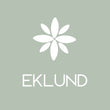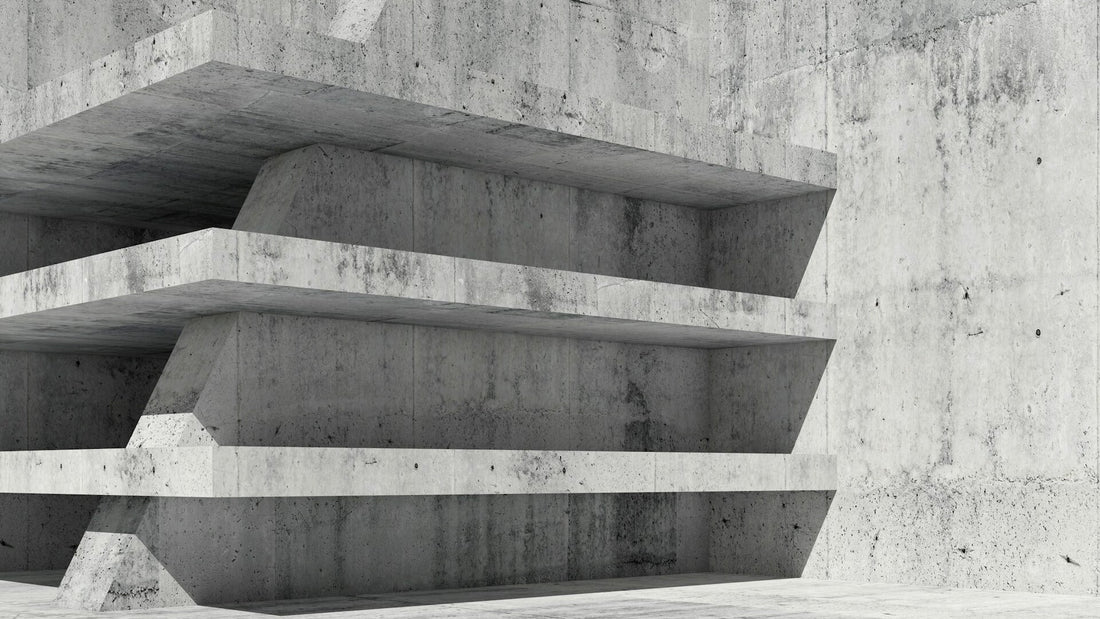Hej everyone,
have you ever wondered why Brutalism is so fascinating? Why, despite its often perceived "raw" aesthetic, it possesses an almost hypnotic appeal?
Brutalism, known for its massive forms and honest materials, influenced not only architecture but also design areas such as glass and ceramic art – especially in Scandinavia.
While many primarily associate Brutalism with massive concrete buildings, this style also left a deep mark on the Scandinavian design world. Scandinavian glass and ceramic artists adopted elements of this movement and transformed raw, unpolished materials into artistic objects.
In this article, we delve deep into the world of Brutalism and discover its connection to Scandinavian glass and ceramic art.
What is Brutalism?
Brutalism emerged in the 1950s as an architectural countermovement to the playful aesthetics of the pre-war period. Instead of decorative elements, the focus was on raw, unadulterated materials—mostly concrete—and geometric forms.
Characteristics of Brutalism:
✔️ Unprocessed materials: Concrete, glass, steel and raw stone dominate.
✔️ Angular, massive shapes: Buildings and objects appear monumental and unpolished.
✔️ Function before beauty: Design is functional and direct.
✔️ Reduced color palette: Gray tones, earth tones and natural materials are the focus.
Although this design direction was initially limited to architecture, it later also found its way into interior design, furniture and art design – especially in Scandinavia.
Brutalism meets Scandinavian glass and ceramic art
Scandinavian design is traditionally associated with minimalist elegance and functional beauty. However, Scandinavian glass and ceramic art in particular has incorporated Brutalist elements and interpreted them in its own subtle way.
1.Scandinavian glass objects with brutalist aesthetics
While glass is often associated with delicate, delicate forms, Scandinavian glass artists also experimented with rough surfaces and solid forms. Particularly in the 1960s and 70s, glass objects emerged that clearly demonstrate a connection to Brutalism.
Important artists and manufacturers:
- Göte Augustsson (Ruda, Sweden): Lindstrand created glass objects with rough textures and monolithic forms that were strongly reminiscent of brutalist architecture.
- Christer Sjögren (Lindshammer, Sweden): Known for his sand-formed glass objects with textured surfaces that appear almost like raw concrete.
- Timo Sarpaneva (Finland): His works for Iittala often featured sculptural, architectural forms with a massive appearance.
2. Brutalist influence in Scandinavian ceramics
The connection between Brutalism and Scandinavian ceramics is particularly striking. Many artists experimented with rough, unglazed surfaces, earthy tones, and massive, blocky forms.
Famous brutalist ceramic artists:
- Axel Salto (Denmark): His organic-sculptural vases with strong, wave-like structures are a prime example of brutalist ceramics.
- Gutte Eriksen (Denmark): Known for her rustic, almost sculptural ceramic works that combine raw earthiness with elegant simplicity.
- Thomas Hellström (Sweden): His works are characterized by rough surfaces, earthy tones, and sculptural forms that perfectly capture the spirit of Scandinavian Brutalism.
These artists were inspired by the philosophy of Brutalism by presenting their works in a direct, raw aesthetic – just as Brutalism presented concrete as a visible material without disguising or embellishing it.
Why does Brutalism fit so well with Scandinavian design?
At first glance, Brutalism and Scandinavian design appear to be opposites: one is rough, massive and monumental, the other elegant, functional and light.
But both share fundamental principles that explain their connection:
✔️ Honesty of materials: Scandinavian design uses natural materials such as wood, stone or glass in their original form – similar to how Brutalism leaves concrete and steel unclad.
✔️ Reduced aesthetics: Both styles focus on clarity, minimalist forms and the absence of unnecessary decoration.
✔️ Functionality: Whether brutalist architecture or Scandinavian ceramic art – the design is always functional and well thought out.
These similarities led many Scandinavian designers to adopt brutalist elements and combine them with their own design philosophy.
Brutalist glass and ceramics in modern interiors
How can you incorporate brutalist glass and ceramic objects into your interior without making your home look like a barren concrete block?
Here are some tips:
🏡 1. Go for unique sculptural pieces – A solid glass vase or a rough ceramic bowl can serve as an eye-catcher in a modern living space.
🌿 2. Combine brutalist elements with soft materials – Rough, angular glass objects harmonize beautifully with warm wood tones and natural fabrics.
🖤 3. Stick to a neutral color palette – Earth tones, black, gray, and muted colors emphasize the raw beauty of brutalist designs.
💡 4. Mix brutalist glass and ceramic elements with mid-century pieces – The clean lines and minimalist shapes of both styles complement each other perfectly.
Conclusion: Brutalism as inspiration for Scandinavian glass and ceramic art
Brutalism is far more than an architectural movement. Its principles of material integrity, raw aesthetics, and monumental formal language have also left their mark on Scandinavian glass and ceramic art.
Whether the sand-formed glass works of Bertil Vallien, the sculptural ceramics of Axel Salto or the rough, unglazed structures of Danish potters – they all show that Brutalism has arrived in the art world and combines harmoniously with Scandinavian design philosophy.
Anyone looking for unique, characterful home accessories will find the perfect blend of art, design and timeless aesthetics in brutalist glass and ceramic objects.
Are you ready to bring a piece of this fascinating style into your home?




